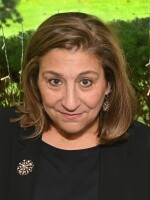Opponents of a controversial Kansas lab designed to study and combat biological diseases have recently found new energy, as work on the Department of Homeland Security project stalled.
The Obama administration’s 2013 budget, released earlier this month, eliminated funding for the Department of Homeland Security’s National Bio and Agro-Defense Facility being built at Kansas State University in Manhattan, Kan.
The budget cuts have buoyed opponents of the project, the cost of which is now expected to climb to over $1 billion, and given them extra time to air their grievances.
NBAF, as it’s known, is a high-security facility designed to research foreign and zoonotic animal diseases. Planners have already been working on the lab for years, and many say they fully expect the facility to be completed eventually.
Tim Barr, the site manager for DHS in Manhattan, acknowledges that the project contains risks, but says the government will address all concerns.
“We have a lot of really smart folks who put together our recent updated risk assessment, and that document will speak for itself,” Barr said, “when it’s made available to the public.”
But opponents who already see the lab as too risky don’t want to wait.
Since the lab will study exotic animal diseases like Nipah and Hendra virus, which can be fatal to humans, opponents fear that any human error would be disastrous.
NBAF will be the only facility capable of studying animal diseases like Foot and Mouth Disease on large animals, which presents new and unique problems such as where to dispose of diseased carcasses and what to do with contaminated waste.
Members of the local activist group Biosecurity in the Heartland have been organizing and gaining strength since DHS awarded Kansas the site. The group is made up of concerned citizens, academics and local professionals.
Retired political science professor Linda Richter said she doesn’t feel Kansas “won” NBAF, as supporters claimed when the site was selected. She said DHS and other supporters tried to suppress opposition early on by holding public meetings when no one was on campus and in places inaccessible to many people. She’s not surprised opposition is growing.
“If it had been open and transparent all along, and your view didn’t prevail, well that’s the way it happens in a democracy,” she said. “On the other hand, if it appears to be slid through, I don’t think they [supporters] should be surprised everyone isn’t wildly enthusiastic.”
DHS says there was, in fact, a six-week period during the site selection process during which anyone could register public comments. More than 3,500 comments about the final five sites came in from around the country. DHS held another public comment session in February of this year.
Gary Covington, another member of the Heartland Biosecurity group and a 3rd generation engineer and contractor, said DHS omitted important information about the risk of natural disasters such as tornados, floods or earthquakes.
DHS has addressed these concerns in its updated risk assessment, now under the review of Congress and the National Academies of Science (NAS).
The updated report is a response to a highly critical review released by NAS in 2010.
The White House, which already allocated $40 million for NBAF, has frozen $50 million appropriated for this year and eliminated funding in next year’s budget.
Bill Dorsett, a retired biologist, worries budget constraints will lead to compromises in the construction of the lab.
“The absolute worst case in this would be a budget germ lab,” Dorsett said. “We don’t need a lab that’s build on the cheap!”
NBAF has divided cattlemen across the country. The state’s largest group of ranchers, the Kansas Livestock Association, is conservative and supports the lab, although it is waiting for reassurance that the facility will be safe.
But the Kansas Cattlemen’s Association, typically a more independent and activist group compared to the KLA, opposed NBAF.
At a recent board meeting of the KCA in Wichita, member Aaron Winter, whose family has been in ranching for decades, says it’s hard to trust DHS.
“I’d like to have some faith that they are doing the best they can,” Winter said. “Are they doing that? I don’t think you can take someone in government that has no idea where this animal comes from and that he can truly understand what we deal with every day.”
Sen. Mary Landrieu of Louisiana, chair of the subcommittee on Homeland Security on the powerful Appropriations Committee, said through a staffer this week that NBAF funding will remain on hold until the latest DHS plan is reviewed by the National Academies of Science panel of experts.
Then it will be up to policy makers to decide how much risk is acceptable for the new lab.
For more NBAF coverage, visit KCUR's Tracking NBAF page.
Harvest Public Media, based at KCUR, is a collaborative public media project that reports on important agriculture issues in the Midwest. Funded by a grant from the Corporation for Public Broadcasting, Harvest Public Media has reporters at six NPR member stations in the region. To learn more, visit www.harvestpublicmedia.org, like Harvest Public Media on Facebook or follow @HarvestPM on Twitter.










